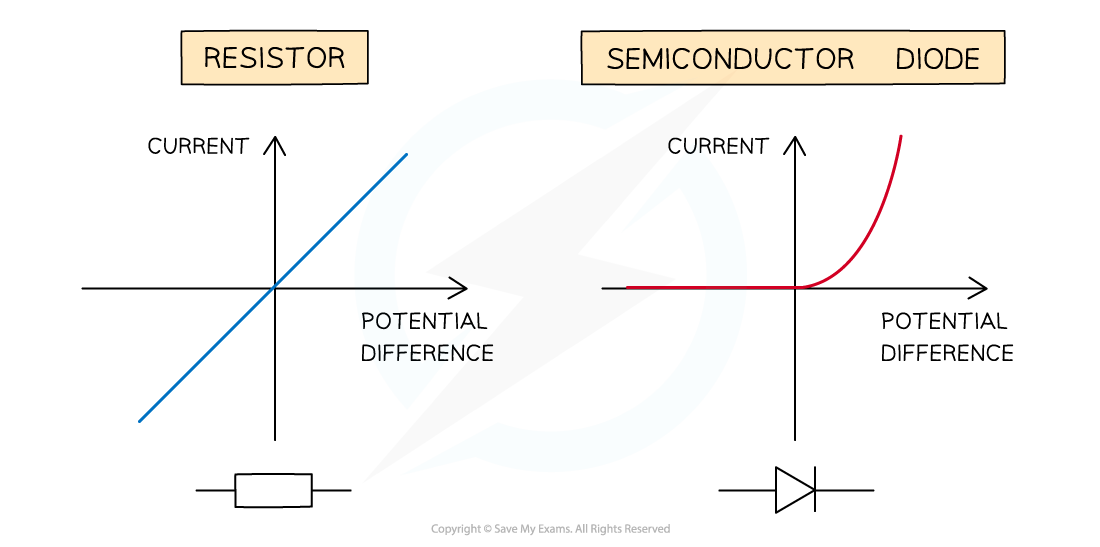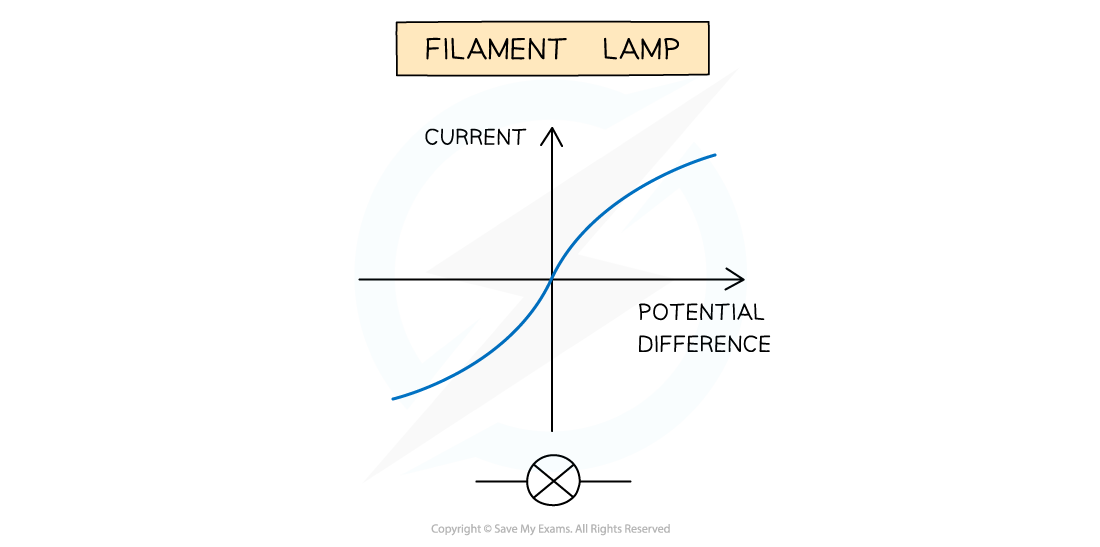Core Practical: Investigating & Testing Circuits (Edexcel GCSE Combined Science): Revision Note
Exam code: 1SC0
Core Practical 4: Investigating & Testing Circuits
Equipment List

Resolution of measuring equipment:
Variable resistor = 0.005 Ω
Voltmeter = 0.1 V
Ammeter = 0.01 A
Experiment 1: Investigating Potential Difference, Current & Resistance
Aim of the Experiment
The aim of the experiment is to investigate the relationship between potential difference, current and resistance for a resistor and a filament lamp
Variables:
Independent variable = Potential difference, V
Dependent variable = Current, I
Control variables:
Potential difference of the power supply
Use of the same equipment e.g. wires
Method

Circuit diagram of the apparatus set up. The fixed resistor will be replaced by a filament lamp
Set up the circuit as shown with the fixed resistor
Vary the voltage across the component by changing the resistance of the variable resistor, using a wide range of voltages (between 8-10 readings). Check the appropriate voltage reading on the voltmeter
For each voltage, record the value of the current from the ammeter 3 times and calculate the average current
Increase the voltage further in steps of 0.5 V and repeat steps 2 and 3
Make sure to switch off the circuit in between readings to prevent heating of the component and wires
Reverse the terminals of the power supply and take readings for the negative voltage (and therefore negative current)
Replace the fixed resistor with the filament lamp and repeat the experiment from step 1
An example of a suitable table might look like this:

Analysis of Results
Plot a graph of average current against voltage (an I–V graph) for each component
If the I–V graph is a straight line through the origin, current is directly proportional to voltage. This is expected from the fixed resistor:
The equation that relates the voltage to the current is given by:
V = IR
This equation shows that V is proportional to I (i.e. if voltage increases, current increases at the same rate) if R is constant, which is true for a fixed resistor
If the I-V graph is curved, then current is not directly proportional to voltage
This is expected from the filament lamp
As the current increases through a filament lamp, its temperature increases
This increases the resistance of the filament, so it does not remain constant
Compare the results from the graphs obtained to the known I–V graphs for the resistor, filament lamp and diode. These should look like:


The expected I-V graphs for the resistor, diode and filament lamp
Experiment 2: Testing Series & Parallel Circuits
Aim of the Experiment
The aim of the experiment is to test series and parallel circuits using resistors and filament lamps. There are a variety of methods to test series and parallel circuits but this starts with a single resistor / filament lamp in series with a cell, and builds on this circuit with an additional resistor in series or in parallel.
Variables:
Independent variable = Potential difference, V
Dependent variable = Current, I
Control variables:
Potential difference of the power supply
Use of the same equipment e.g. wires
Method

Circuit diagram of the apparatus set up. The fixed resistors will be replaced by a filament lamps
Set up the circuit as shown with the single fixed resistor
Record the voltage using the voltmeter and the current using the ammeter
For each pair of voltage and current, calculate the resistance and record this
Change the resistor and repeat step 2 and 3
Arrange the two resistors in series as shown in the image, then repeat step 2
Arrange the two resistors in parallel as shown in the image, then repeat step 2
Replace the fixed resistor with a filament lamp and repeat the experiment from step 1
An example of a suitable table might look like this:

Analysis of Results
The value of the resistance for each voltage and current reading is calculated using the equation:

In series, the total resistance of the two resistors is equal to the sum of the two individual resistances
In parallel, the total resistance of the two resistors is less than either of the two individual resistances
Evaluating the Experiment
Systematic Errors:
The voltmeter and ammeters should start from zero, to avoid zero error in the readings
Random Errors:
In practice, the voltmeter and ammeter will still have some resistance, therefore the voltages and currents displayed may be slightly inaccurate
The temperature of the equipment could affect its resistance. This must be controlled carefully
Taking multiple readings of the current for each component will provide a more accurate result and reduce uncertainties
Safety Considerations
When there is a high current and a thin wire, the wire will become very hot
Make sure never to touch the wire directly when the circuit is switched on
Switch off the power supply right away if burning is smelled
Make sure there are no liquids close to the equipment, as this could damage the electrical equipment
The components will get hot especially at higher voltages
Be careful when handling them - especially the filament lamp
Disconnect the power supply in between readings to avoid the components heating up too much

Unlock more, it's free!
Did this page help you?